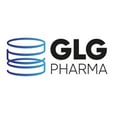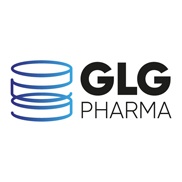STAT3 inhibitors are important agents for cancer therapy. STAT is an acronym for Signal Transducer and Activator of Transcription. STAT is a protein that is mostly found in the cell cytoplasm and is activated by upstream specific signals. It is first activated (phosphorylated by adding phosphorous to the protein to form p-STAT3), it then dimerizes (two p-STAT molecules bind together) and then it crosses the nuclear membrane, binds to the nuclear DNA and triggers a cascade of subsequent reactions that induces the cell to grow or die, a process called apoptosis. P-STAT3 is deactivated by the removal of phosphorous. In a normal cell this process turns on and off like a turn signal and lasts less than two hours. In cancer, the process remains on and cells don’t die, they continue to divide.
There are seven STATs, each has a specific role in various cell functions. The one that interests GLG the most at this time is STAT3. As it turns out, measuring the p-STAT3 in a cancer cell tells the physician something really important, that this disease is in a run-away state of exponential growth rates. The molecule; p-STAT3, plays also a major role in acquired resistance to several anticancer therapies.
In our normal tissues, STAT3 is what the scientists call a ‘highly conserved’ mechanism and is only produced and turned on when it is time for the cell to divide. In cancer, p-STAT3 is a non-stop mechanism. In diseases like esophageal cancer, multiple myeloma, pancreatic cancer, glioma blastoma, liver cancer, some lung cancers and triple negative breast cancer, p-STAT3 is present in approximately 65% of the tumors.

Not a pleasant thought for someone possibly with breast cancer.
The good news is that this abnormal process can be stopped and GLG is in a race against the clock. GLG’s compounds (STAT3 inhibitors), inhibit p-STAT3 and stop cancer cell proliferation. GLG’s inhibitors target the abnormal proliferation process at any of three different points of attack:
1. Phosphorylation
2. Dimerization
3. DNA Binding
Here is a cartoon we borrowed to help explain how our inhibitors of p-STAT3 work:

The arrows show where our molecules stop the abnormal proliferation.
- Our phosphorylation (first two arrows) inhibitor is called GLG-101
- We have 2 dimerization inhibitors (second arrow from the top) GLG-202 and GLG-302. GLG-302 is currently in the NCI’s Prevent Cancer program.
- Our third inhibitor (third arrow from the top) is called GLG-801 and it is currently undergoing Phase 2 clinical trials in Chronic Lymphocytic Leukemia and has already demonstrated that in patients, it turns off p-STAT3. It is a repurposed drug, meaning that we can seek approval in cancer treatment under the FDA’s 505(b)(2) regulations (shorter and less costly to market approach sanctioned by the FDA).
The 505(b)(2) application also means that the price of the new product, unless reformulated to deliver it to the patient in a more efficient delivery formulation, will have margins similar to the operating margins achieved by generic companies.
What’s even more startling is that in the laboratory GLG-302 has been shown to reverse chemotherapy resistance in over 9 commercial anti-cancer drugs and across 10 different types of cancer!
9 Commercial Anti-Cancer Drugs Developing Resistance in Patients
| |
| |
- Bortezomib $2.8 billion
- Cetuximab $703 million
- Cisplatin $2.0 billion
- Doxorubicin $450 million
- Docetaxel $1.5 billion
- Paclitaxel $1.0 billion
- Tamoxifen $140 million
- Vemurafenib $675 million
- Vorinostat $150 million
Total Sales of Drugs whose Resistance can be Reversed by GLG-302: ~$8.4 billion
|
|
Cancer types that have been found to develop acquired resistance to chemotherapy are:
- Breast (Triple Negative)
- Liver
- Head & Neck
- Melanoma
- Multiple Myeloma
- Ovary
- Urinary Bladder
- CTCL (cutaneous T cell lymphoma)
- GIST (gastrointestinal stromal tumor)
- Esophageal
By reversing the acquired resistance to chemotherapy, with our GLG-302 p-STAT3 inhibitor, the cancer cells once again become susceptible to chemotherapy treatment and are killed. We have seen this work reported in multiple independent laboratories across the world and across the listed cancers. If a cancer cell does not show p-STAT3 upregulation, then our compounds will not benefit the patient. If however the p-STAT3 is elevated, we could improve patient outcomes!
Want to find out more about our Company? Are you a qualified investor? Sign up at Poliwogg. Follow us as we will post more information on our website. Thank you for your time and consideration!

Richard Gabriel, BS, MBA
COO
GLG Pharma, LLC
President
GLG Pharma, SAS






